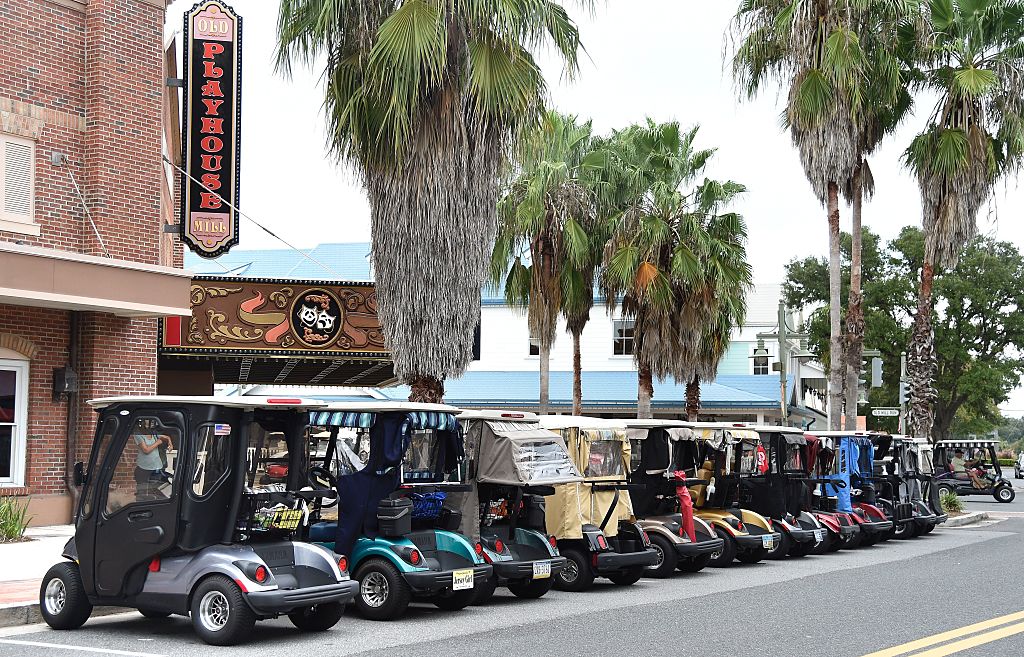The fastest-growing U.S. metro area is a Florida retirement community, and other 2020 Census highlights


America was more multiracial and racially diverse, urban and suburban, older, and slightly more populous in 2020 than in 2010, the U.S. Census Bureau reported Thursday. The data will be used to redraw congressional and state legislative districts and allocate federal funds for the next 10 years, and inside the data are some interesting, illustrative, maybe contradictory points about a changing country. Here are four.
1. The fastest-growing big city in the U.S. over the last decade was Phoenix, which hopped over Philadelphia to reach No. 5 of the 10 largest cities. While 52 percent of all U.S. counties lost population between 2010 and 2020, 80 percent of metropolitan areas added residents.
2. The fastest growing metro area wasn't a city, however — it was The Villages, a sprawling retirement community in Central Florida, built on former cow pastures. The Villages saw a 39 percent increase since 2010, versus an 8.7 percent increase in all U.S. metro areas, according to U.S. Census Bureau senior demographer Marc Perry.
The Week
Escape your echo chamber. Get the facts behind the news, plus analysis from multiple perspectives.

Sign up for The Week's Free Newsletters
From our morning news briefing to a weekly Good News Newsletter, get the best of The Week delivered directly to your inbox.
From our morning news briefing to a weekly Good News Newsletter, get the best of The Week delivered directly to your inbox.
3. Aging baby boomers and declining birth rates meant that the population of adults over 18 grew more than 10 percent over the past decade, to 258.3 million people, while the population of kids 18 and under dropped 1.4 percent, to 74.2 million, or about 22 percent of the population. In the South, 22.5 percent of the population was 18 and under, while kids made up just 20 percent of the Northeast.
4. The nation's overall 7.4 percent population growth was fueled by a 23 percent boom in the Hispanic population and, to a smaller extent, a 36 percent jump in the Asian population. Hispanics overtook whites as the largest group in California, the nation's most populous state, and pulled even with white Texans, in the No. 2 largest state. "Texas gained nearly 11 Hispanic residents for every additional white resident since 2010," The Texas Tribune notes.
"If not for Hispanics, Asians, people of two or more races, those are the only groups underage that are growing," says William Frey, a senior fellow at Brookings' Metropolitan Policy Program, tying together several threads. "A lot of these young minorities are important for our future growth, not only for the child population but for our future labor force."
A free daily email with the biggest news stories of the day – and the best features from TheWeek.com
Peter has worked as a news and culture writer and editor at The Week since the site's launch in 2008. He covers politics, world affairs, religion and cultural currents. His journalism career began as a copy editor at a financial newswire and has included editorial positions at The New York Times Magazine, Facts on File, and Oregon State University.
-
 Zimbabwe’s driving crisis
Zimbabwe’s driving crisisUnder the Radar Southern African nation is experiencing a ‘public health disaster’ with one of the highest road fatality rates in the world
-
 The Mint’s 250th anniversary coins face a whitewashing controversy
The Mint’s 250th anniversary coins face a whitewashing controversyThe Explainer The designs omitted several notable moments for civil rights and women’s rights
-
 ‘If regulators nix the rail merger, supply chain inefficiency will persist’
‘If regulators nix the rail merger, supply chain inefficiency will persist’Instant Opinion Opinion, comment and editorials of the day
-
 TikTok secures deal to remain in US
TikTok secures deal to remain in USSpeed Read ByteDance will form a US version of the popular video-sharing platform
-
 Unemployment rate ticks up amid fall job losses
Unemployment rate ticks up amid fall job lossesSpeed Read Data released by the Commerce Department indicates ‘one of the weakest American labor markets in years’
-
 US mints final penny after 232-year run
US mints final penny after 232-year runSpeed Read Production of the one-cent coin has ended
-
 Warner Bros. explores sale amid Paramount bids
Warner Bros. explores sale amid Paramount bidsSpeed Read The media giant, home to HBO and DC Studios, has received interest from multiple buying parties
-
 Gold tops $4K per ounce, signaling financial unease
Gold tops $4K per ounce, signaling financial uneaseSpeed Read Investors are worried about President Donald Trump’s trade war
-
 Electronic Arts to go private in record $55B deal
Electronic Arts to go private in record $55B dealspeed read The video game giant is behind ‘The Sims’ and ‘Madden NFL’
-
 New York court tosses Trump's $500M fraud fine
New York court tosses Trump's $500M fraud fineSpeed Read A divided appeals court threw out a hefty penalty against President Trump for fraudulently inflating his wealth
-
 Trump said to seek government stake in Intel
Trump said to seek government stake in IntelSpeed Read The president and Intel CEO Lip-Bu Tan reportedly discussed the proposal at a recent meeting
